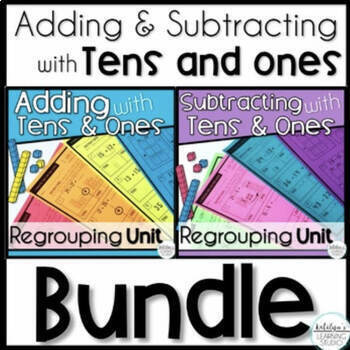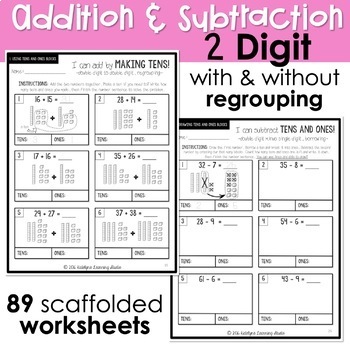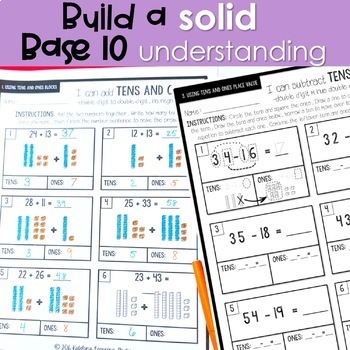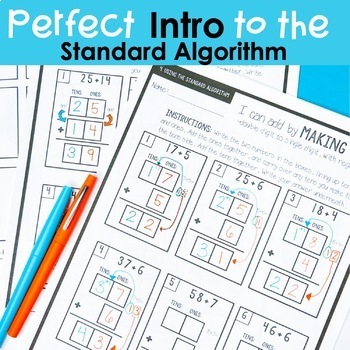2 Digit Addition & Subtraction with Regrouping & Without Regrouping Double Digit
- Zip
What educators are saying
Products in this Bundle (2)
Description
Avoid confusion when teaching 2 digit addition and subtraction with and without regrouping by using base ten blocks! These systematic and scaffolded tens and ones worksheets help students learn two digit adding and subtracting in a concrete and easy way. Students feel confident as they use base ten blocks to work up to the standard algorithm with these addition and subtraction worksheets.
This bundle gives you a 20% discount on my Adding with Tens and Ones and Subtracting with Tens and Ones Units!
About these Units:
- 91 pages of no-prep practice for basic two digit addition and subtraction using tens and ones to build understanding.
- There are 4 sub-units for both addition and subtraction that build off of each other from simple problems using blocks to abstract problems using the standard algorithm.
- Both the addition and subtraction units cover double to single digit and double to double digit problems with and without regrouping/borrowing.
- Pre-requisite skills needed for each type of problem are also covered.
Visit the links below or see the preview for all that is included.
This bundle includes:
Adding with Tens and Ones Unit: Introduction to Regrouping
Subtracting with Tens and Ones Unit: Introduction to Borrowing
Common Core Standards Covered:
1.NBT.B.2
1.NBT.B.2.a
1.NBT.B.2.b
1.NBT.B.2.c
1.NBT.C.4
2.NBT.B.5
**********Check out some of my other bundles!**********
Reading Intervention Binder Bundle
********************Customer Tips********************
• New products in my store are 50% off for the first 24 hours they are posted! Follow me by clicking HERE so you don't miss any new products or sales.
• Did you know with each purchase you make, you can earn points towards free products on TPT? For each product you provide feedback for, you earn 1 TPT credit for each dollar it was worth. After you make a purchase, hover over "My TPT" and click "My Purchases". Click "Provide Feedback" by the green little thumb. After you provide feedback, you can check your TPT Credit Balance by hovering over "My TPT" and clicking "TPT Credit Balance". Such an awesome way to save some money! Happy shopping!





